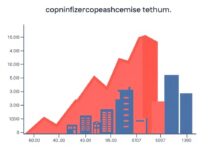How to protect your wealth from currency devaluation

Consider reallocating assets into a diverse portfolio encompassing real estate, commodities, and precious metals. This approach minimizes reliance on any single currency, effectively mitigating risks associated with inflationary trends.
Diversification is not merely a protective measure but a proactive strategy in finance. By distributing investments across various sectors, one can reduce vulnerability to economic fluctuations while enhancing overall returns.
Engaging in hedging techniques further fortifies your financial position. Options and futures contracts serve as excellent tools to counteract adverse movements in currency values, providing a buffer during periods of volatility.
Monitoring macroeconomic indicators such as interest rates and central bank policies will empower you to make informed decisions. Staying ahead of inflationary shifts equips you with the knowledge needed to adjust your investment strategies effectively.
Diversify Your Investment Portfolio
Allocate assets across various classes such as stocks, bonds, real estate, and commodities to mitigate risks associated with inflation and currency fluctuations. A well-rounded mix can buffer against downturns in specific sectors while enhancing potential returns.
Consider including international investments in your strategy. Exposure to foreign markets can provide a hedge against domestic currency depreciation, as assets in different currencies may appreciate when local purchasing power declines.
Incorporate alternative investments like precious metals or cryptocurrencies. These tend to behave differently compared to traditional financial instruments and can serve as a safeguard during periods of heightened economic uncertainty.
Regularly review and adjust your portfolio to respond to changing market conditions and inflation trends. Rebalancing ensures that no single investment disproportionately impacts overall performance, keeping the risk profile aligned with financial goals.
Utilize exchange-traded funds (ETFs) for easy access to diversified portfolios without the need for extensive capital. These funds enable investment across multiple sectors or geographic areas while maintaining liquidity.
Utilize Foreign Currency Accounts
Open foreign currency accounts to mitigate risks associated with fluctuations in exchange rates. These accounts allow you to hold funds in different denominations, effectively serving as a hedge against potential depreciation of your domestic currency.
For instance, if you’re concerned about the volatility of your local currency, consider maintaining balances in stable currencies such as the US dollar or euro. This diversification can protect your financial assets and create opportunities for investment in international markets without the immediate pressure of conversion fees.
Evaluate various banks and financial institutions that offer competitive interest rates on foreign currency deposits. Look for options that provide easy access to online banking services, enabling swift transactions and management of multiple currencies from a single platform.
Incorporate this approach into a broader financial strategy by regularly assessing the performance of your foreign holdings. Adjust allocations based on market trends and geopolitical developments that may impact currency strength.
This method not only helps preserve value but also enhances overall portfolio stability through strategic diversification. By effectively managing different currencies, you can navigate financial uncertainties with greater confidence.
Invest in Precious Metals
Allocating a portion of assets to precious metals like gold and silver offers an effective means of hedging against inflation. These tangible assets often retain their value or appreciate during economic downturns, providing a buffer against currency devaluation.
Consider allocating 10-15% of an investment portfolio to these metals. This diversification can stabilize overall performance, as precious metals typically exhibit low correlation with traditional equities and bonds. Historical data indicates that during periods of high inflation, the prices of gold and silver have surged, making them attractive options for wealth preservation.
Investing in physical bullion, exchange-traded funds (ETFs), or mining stocks presents multiple avenues for exposure. Each option has its own risk profile; therefore, thorough research is essential before committing capital. Physical ownership involves storage and insurance considerations, while ETFs provide liquidity but may carry management fees.
Monitoring global economic indicators can enhance decision-making regarding entry and exit points in the precious metals market. Events such as geopolitical tensions or shifts in monetary policy often influence metal prices significantly. Staying informed allows for timely adjustments to holdings based on market conditions.
Monitor Economic Indicators Regularly
Analyzing key economic indicators is crucial for anticipating fluctuations in the finance environment. Focus on these metrics:
- Inflation Rate: Keep an eye on consumer price index (CPI) changes, as they directly impact purchasing power.
- Gross Domestic Product (GDP): Track GDP growth rates to assess overall economic health and potential currency strength.
- Employment Data: Unemployment rates provide insights into economic stability; rising unemployment can signal a weakening economy.
- Interest Rates: Monitor central bank policies and interest rate adjustments, which influence borrowing costs and investment returns.
- Trade Balance: A country’s exports versus imports can affect currency value; deficits may weaken the currency.
This data aids in making informed decisions about hedging strategies and asset diversification. Use financial tools and platforms to receive real-time updates on these indicators, enabling prompt reactions to market shifts. Regular assessment ensures that your portfolio remains resilient against adverse trends in monetary systems.
Incorporating this analysis into your routine enhances awareness of underlying economic forces, allowing for proactive adjustments in investment tactics.







